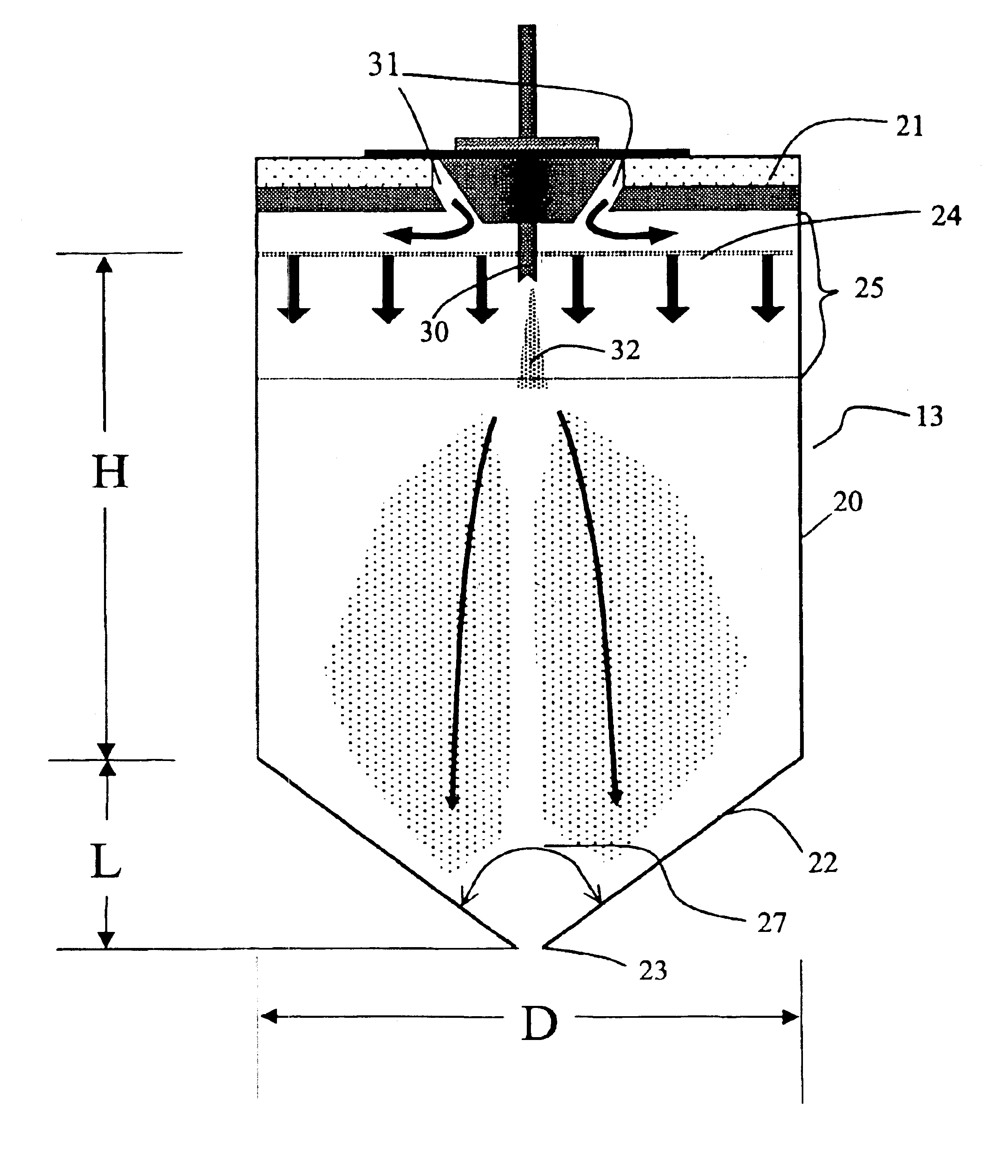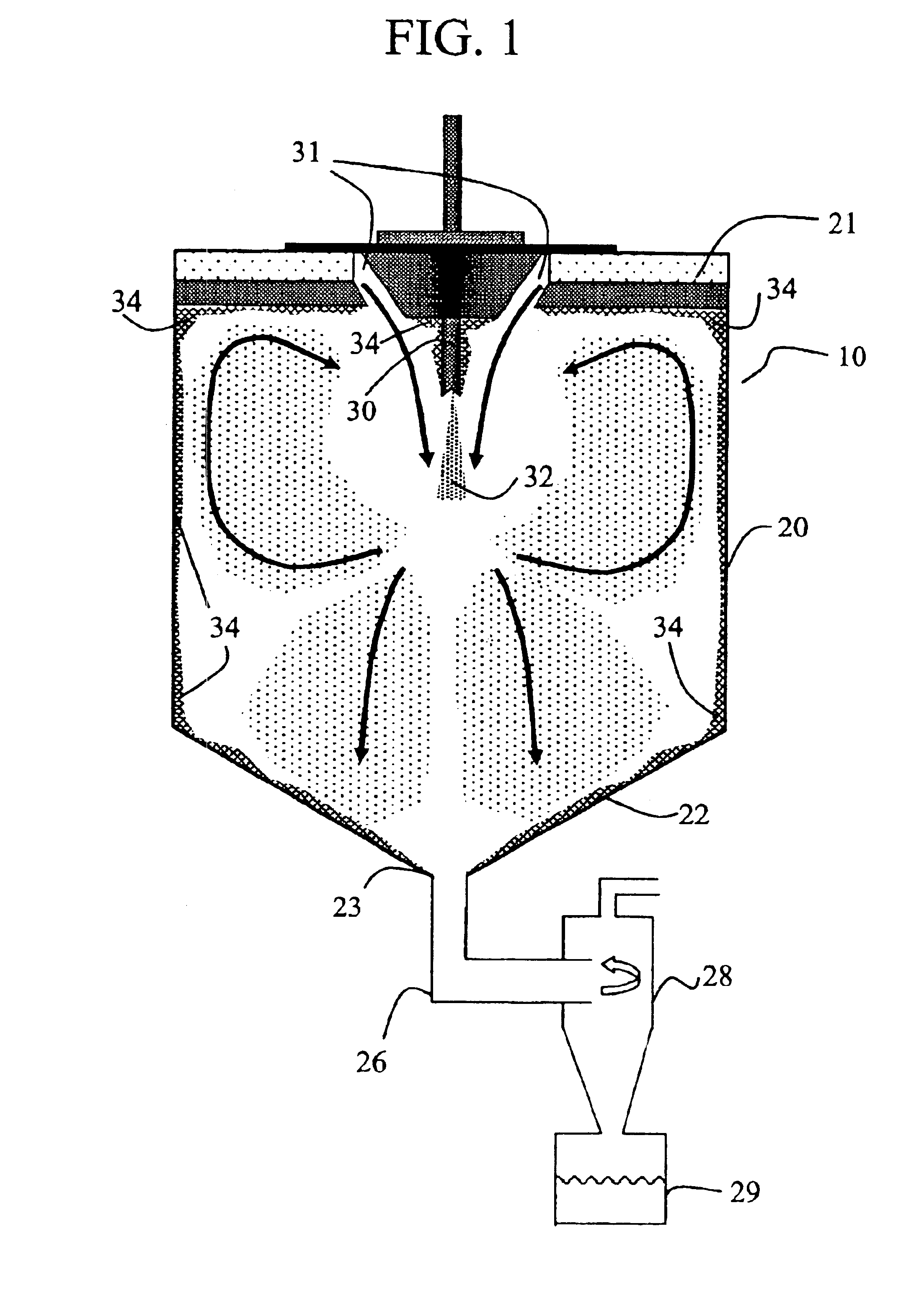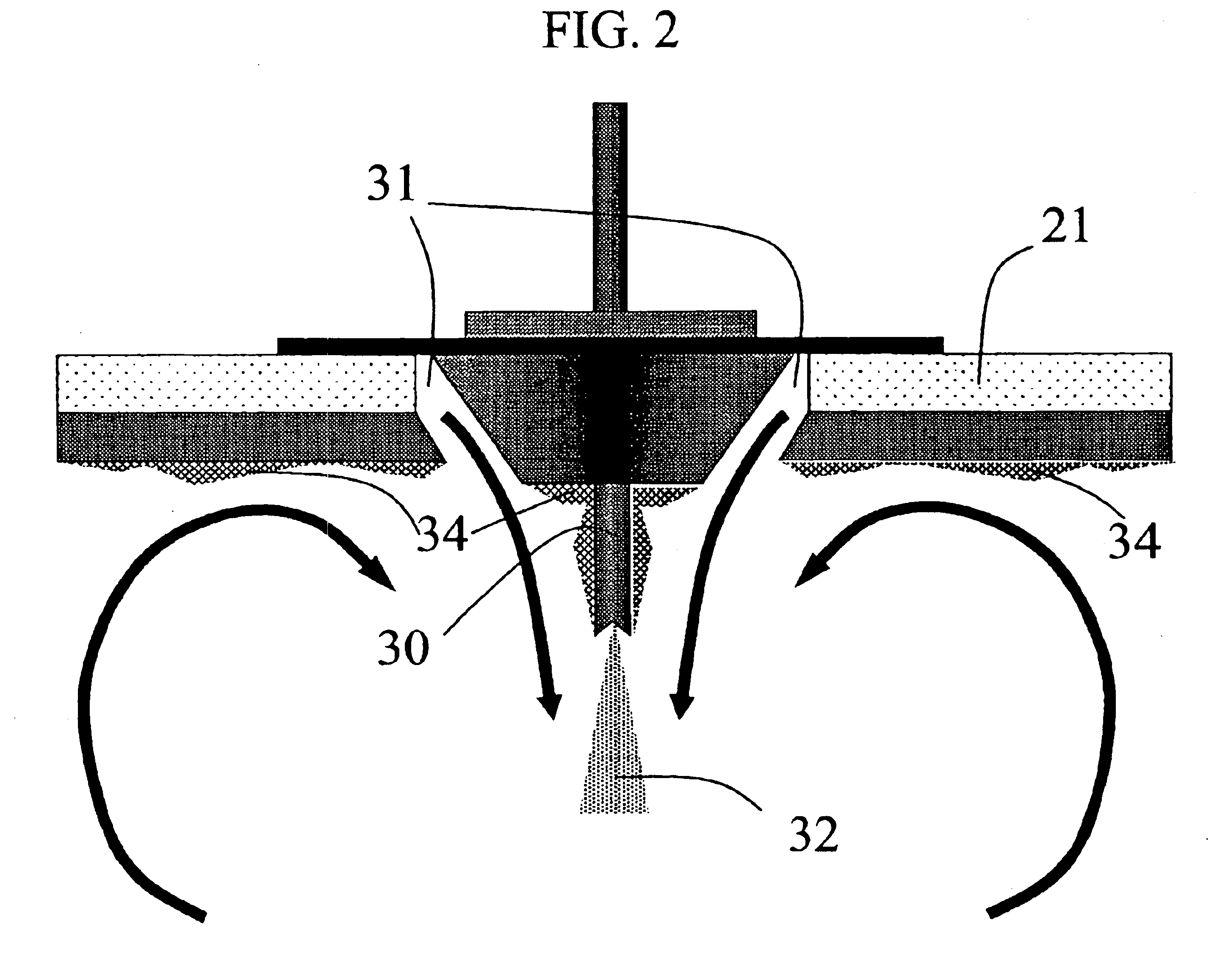Method for making homogeneous spray-dried solid amorphous drug dispersions utilizing modified spray-drying apparatus
- Summary
- Abstract
- Description
- Claims
- Application Information
AI Technical Summary
Benefits of technology
Problems solved by technology
Method used
Image
Examples
example 1
[0117]A solid amorphous dispersion was prepared using a spray-drying apparatus of substantially the same configuration as that shown in FIG. 5. The dispersion comprised 25 wt % of the low-solubility drug 4-[(3,5-bis-trifluoromethyl-benzyl)-methoxycarbonyl-amino]-2-ethyl-6-trifluoromethyl-3,4-dihydro-2H-quinoline-1-carboxylic acid ethyl ester (“Drug 1”) and 75 wt % of the amphiphilic polymer hydroxypropyl methyl cellulose acetate succinate (HPMCAS). Drug 1 was mixed in a solvent (acetone) together with a “medium fine” grade (AQUOT-MF) of HPMCAS (manufactured by Shin Etsu) to form a spray solution. The spray solution comprised 2.5 wt % Drug 1, 7.5 wt %. HPMCAS, and 90 wt % acetone. The spray solution was pumped using a high pressure pump (Z-Drive 2000 High Pressure Gear Pump from Zenith, Inc. of Sanford, N.C.) to a spray-dryer (Niro type XP Portable Spray-Dryer with a Liquid Feed Process Vessel Model No. PSD-1) equipped with a pressure nozzle (Spraying Systems Pressure Nozzle and Body...
example 2
[0142]A solid amorphous dispersion was prepared as in Example 1 with the same spray-dryer configuration as in Example 1, except that the height of the drying chamber H was 2.3 m, resulting in a larger volume for the drying chamber. Thus, the volume of the spray-drying apparatus was 1.29 m3. Table 6 gives the spray-drying conditions used. Nitrogen drying gas was circulated through the gas-disperser plate at an inlet temperature of 45° C. and a flow rate of 1.4 standard m3 / min. The evaporated solvent and wet drying gas exited the spray-dryer at a temperature of 10° C.
[0143]Referring to Equation 1 above, the minimum residence time for the droplets in the spray drier was calculated as τ=1.291.4=0.92 min×60 secmin=55 sec.
[0144]
TABLE 6Pol-DrugymerSolventNozzleFeedMassMassMassNoz-PressureRateTinToutYield(g)(g)(g)zle(psig / atm)(g / min)(° C.)(° C.)(%)1504505400SK290 / 2120645108880-16
[0145]Inspection of the spray-dryer after formation of the dispersion showed no evidence of product build u...
example 3
[0149]A solid amorphous dispersion comprising 50 wt % of the low solubility drug 5-chloro-1H-indole-2-carboxylic acid [(1S)-benzyl-(2R)-hydroxy-3-((3R,4S)-dihydroxy-pyrrolidin-1-yl-)-3-oxypropyl]amide (“Drug 2”) with HPMCAS-MF was made using the spray-drying apparatus of Example 1 using a solvent comprising a mixture of 10 wt % water in acetone. The spray-drying conditions are given in Table 8. Nitrogen drying gas was delivered to the gas-disperser plate at an inlet temperature of 103° C. and a flow rate of 1.6 standard m3 / min. The evaporated solvent and drying gas exited the spray drier at a temperature of 51±4° C.
[0150]Referring to Equation 1 above, the minimum residence time for the droplets in the spray drier was calculated as τ=0.651.6=0.41 min×60 secmin=24 sec.
[0151]Inspection of the spray-dryer after formation of the dispersion showed no evidence of product build-up on the spray-dryer top, the pressure nozzle, the walls of the drying chamber or on the chamber cone.
[0152...
PUM
| Property | Measurement | Unit |
|---|---|---|
| Length | aaaaa | aaaaa |
| Diameter | aaaaa | aaaaa |
| Diameter | aaaaa | aaaaa |
Abstract
Description
Claims
Application Information
 Login to View More
Login to View More - R&D
- Intellectual Property
- Life Sciences
- Materials
- Tech Scout
- Unparalleled Data Quality
- Higher Quality Content
- 60% Fewer Hallucinations
Browse by: Latest US Patents, China's latest patents, Technical Efficacy Thesaurus, Application Domain, Technology Topic, Popular Technical Reports.
© 2025 PatSnap. All rights reserved.Legal|Privacy policy|Modern Slavery Act Transparency Statement|Sitemap|About US| Contact US: help@patsnap.com



